October 2023 Newsletter

The 2023 LAN Summit is just around the corner! Be sure to join us in Washington, D.C. on October 30 from 9:30 AM – 4:00 PM ET at the Grand Hyatt Washington.
We’re excited to announce that leaders from CMS will be a part of this year’s exciting convening! Get ready for enlightening conversations on multi-payer engagement and delivery system reform.
Here’s a sneak peek at our CMS leadership lineup:
- Jon Blum, Principal Deputy Administrator & Chief Operating Officer, CMS
- Meena Seshamani, Deputy Administrator & Director, Center for Medicare
- Daniel Tsai, Deputy Administrator & Director, Center for Medicaid & CHIP Services
- Liz Fowler, Ph.D., Deputy Administrator & Director, Center for Medicare & Medicaid Innovation (CMMI)
- Dora Hughes, Acting Chief Medical Officer, Acting Director, Center for Clinical Standards and Quality
- Arrah Tabe-Bedward, Deputy Director, CMMI
- Ellen Lukens, Deputy Director, CMMI
- Purva Rawal, Ph.D., Chief Strategy Officer, CMMI
Visiting from out of town? Book your room at the Grand Hyatt Washington using our conference code G-RIPP. Hotel rates for the 2023 LAN Summit are based on published rates on www.GSA.gov.

Download the Multi-Payer Alignment Blueprint, a guide for applying engagement strategies to achieve multi-payer alignment. The Blueprint compiles successful multi-payer alignment initiatives from states participating in the State Transformation Collaboratives (STCs) along with national efforts and contributions from the LAN. The initiatives vary in scale and complexity and provide examples that other states can adapt and incorporate into their own multi-payer alignment strategy. The shared goals and approaches across these initiatives also provide a basis for national alignment.
The examples of multi-payer alignment initiatives featured in this Blueprint, while not exhaustive, provide a picture of success factors that can be applied in other alignment efforts. They demonstrate that alignment happens in stages, with states starting small and utilizing continued and committed partnerships to build momentum toward sustainable impact and health system transformation. We encourage stakeholders to use the Blueprint to learn from states’ initiatives in addressing alignment challenges and further grow efforts for alignment. Download the Blueprint.

Miss any of the Spring Series sessions? Recordings from each session are now available!
- May – Health Equity: Partnering with Community-Based Organizations: A panel of experts discussed how payers can build trust and more effective partnerships with community-based organizations in alternative payment models and value-based payment programs.
- June – Primary Care’s Role in Advancing High-Quality Accountable Care: We unveiled the interactive Accountable Care Curve, a tailored approach to enhancing the health care community’s capabilities for driving accountable care. CMS leadership—Administrator Chiquita Brooks-LaSure, CMMI Deputy Administrator and Director Liz Fowler, and Center for Medicaid & CHIP Services Deputy Administrator and Director Daniel Tsai—discussed national efforts to advance accountable care relationships and CMS’s commitment to innovation in primary care through the newly announced Making Care Primary model.
- July – The State Transformation Collaboratives’ Multi-Payer Alignment Blueprint: We released the Multi-Payer Alignment Blueprint, which features discussion and best practices from state-wide efforts in Arkansas, California, Colorado, and North Carolina.
The new LAN Member Events Calendar highlights upcoming events from member organizations of the LAN’s Accountable Care Action Collaborative (ACAC). Use the filters to explore the different types of planned events.
ACAC members can add an event to the calendar by filling out the event request form with all applicable information. The LAN Operator Team may reach out with additional questions.
Please send any questions or feedback to HCPLAN@deloitte.com.

The Best Way to Discuss Value-Based Care with Patients
Read more: What’s The Best Way to Discuss Value-Based Care with Patients?• Value-based care is continuing to gain more traction in the U.S. health care system. Referencing data from the LAN this article spotlights a recent study that looked at how patients perceive the shift to value-based care and how providers can better discuss the principles of value-based care with patients. Through consumer surveying, the researchers found that most patients like the idea of value-based care— but they resonate more with the term “quality-focused care” or “patient-first care” instead of “value-based care.” Additionally, the study found that patients want a more humanized health care experience, attentive listening from their providers, and treatments that address the root causes of health rather than a list of symptoms.
Technologies to Ensure Value-Based Care Success
Read more: What Technologies Do Providers Need for Value-Based Care Success?• As providers move toward value-based care success, technological capabilities are essential for implementation. Value-based care can only be successful if payers and providers can access quality data. Health information exchanges, population health management tools, data analytics, artificial intelligence and machine learning, and price transparency technology can be used by providers to realize intended outcomes for advancing value-based care.
Executive Forum Member Dr. Sachin Jain on Equity in Health Care Delivery
Listen and read more: The Healthcare Leadership Crisis with Dr. Sachin Jain• Dr. Sachin Jain appeared on The Other 80 podcast to discuss the delivery of health services to people experiencing homelessness and LGBTQ+ elders. He also gave insights on health equity and social drivers, and why health care should borrow less from other industries. Dr. Jain stated, “We need more ethical leadership in health care. And what I mean by that is we need to make sure that the words on the wall of every health care organization, the ethical compass, the values, the mission statements, the vision statements, actually mean something, and that the behaviors of leaders actually align to things.”
Dr. Marshall Chin & Karen Dale on Health Equity Advisory Team (HEAT)’s Mission, Vision, and Goals
Listen and read more: Advancing Health Equity Through Alternative Payment Models. HCPLAN HEAT Co-Chairs• HEAT Co-Chairs Dr. Marshall Chin and Karen Dale appeared on the Workgroup for Electronic Data Interchange’s podcast to discuss the HEAT’s mission, vision, and goals. They also shared how the team is working to effectively address and eliminate health disparities while identifying payment models that aid communities.
Value-Based Care & The Importance of Collaborative Partnerships
Read more: Unlocking the Power of Value-Based Care: How Collaborative Partnerships Drive Health Care Success• This article emphasizes the importance of community as the foundation for advancing value-based care and community engagement with the other primary stakeholders. It also highlights how the movement toward value-based care delivery models is supported by a balanced partnership between four key stakeholders: patients, providers, payers, and community.
Making Care Primary (MCP) Model
Read more: CMS’ Latest Innovation Model – The Making Care Primary (MCP) Model Includes Focus on Social Determinants of Health• CMS Administrator Chiquita Brooks-LaSure announced the Making Care Primary (MCP) Model at the June Spring Series session, Primary Care’s Role in Advancing High-Quality Accountable Care. This article outlines how the model was created to improve support for the delivery of primary care services, leverage community-based resources, and strengthen coordination between beneficiaries’ primary care clinicians and specialists, social service providers, and behavioral health clinicians.
Read more: CMS Announces New MCP Model for Primary Care Coordination
• This article provides more details on the release of the MCP Model. CMS Administrator Chiquita Brooks-LaSure emphasized that “this model is one more pathway CMS is taking to improve access to care and quality of care, especially to those in rural areas and other underserved populations. This model focuses on improving care management and care coordination, equipping primary care clinicians with tools to form partnerships with health care specialists, and partnering with community-based organizations, which will help the people we serve with better managing their health conditions and reaching their health goals.
Our Vision
An American healthcare system that pays for value to the benefit of our patients and communities.
Our Mission
To accelerate the shift to value-based care in order to achieve better outcomes at lower cost.
Our Goal Statement
Accelerate the percentage of US healthcare payments tied to quality and value in each market segment through the adoption of two-sided risk alternative payment models.


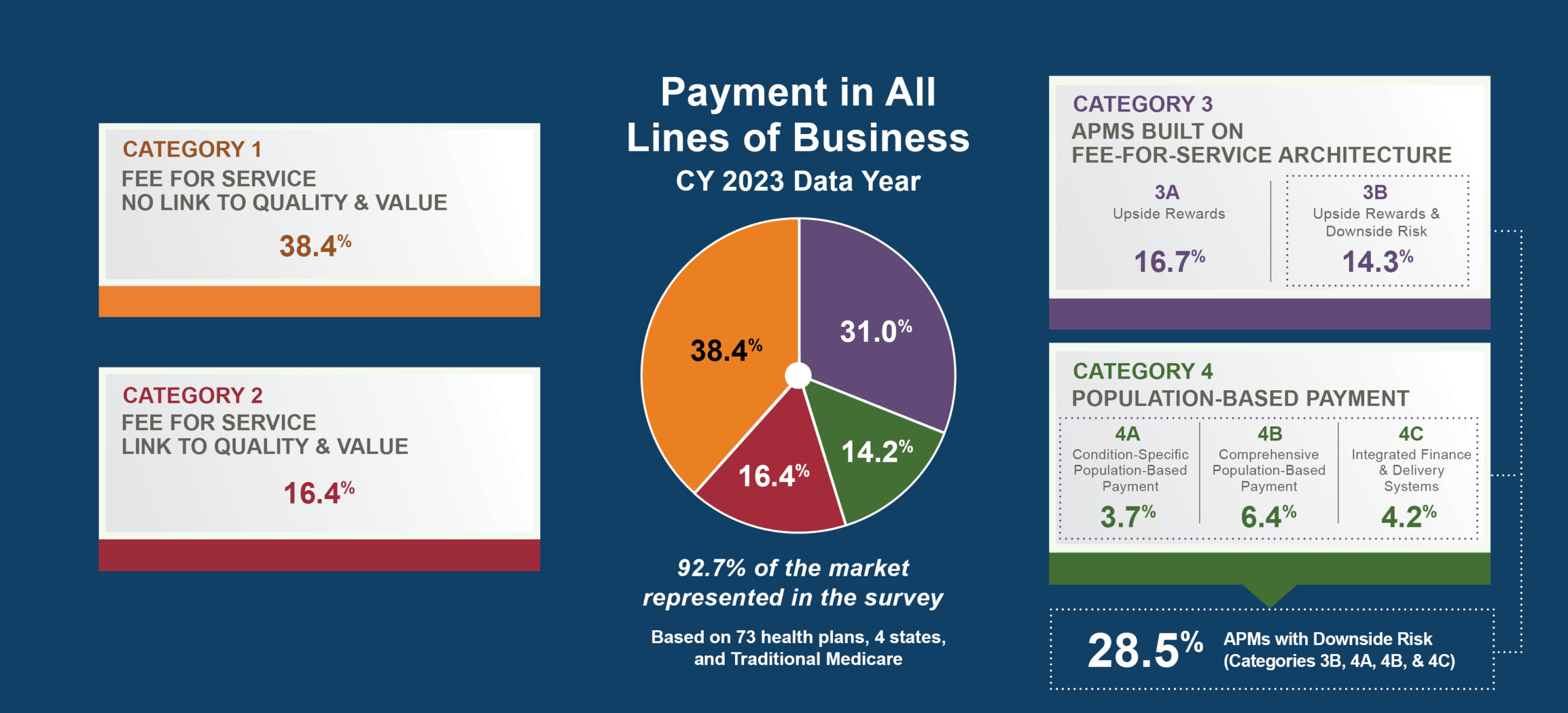

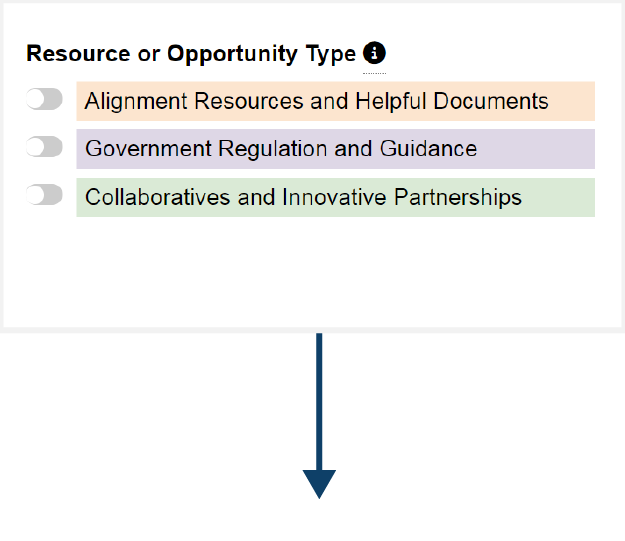
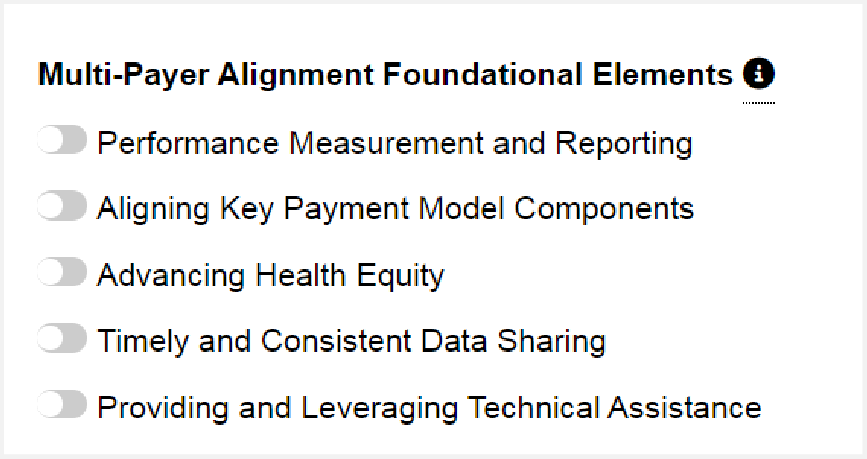




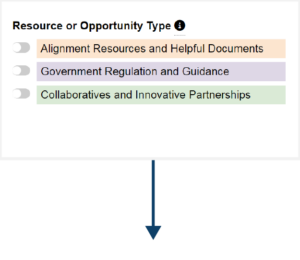

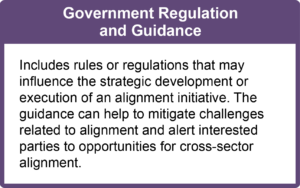
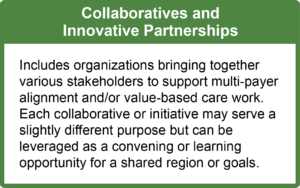
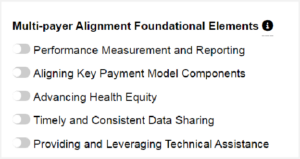




 Emily DuHamel Brower, M.B.A., is senior vice president of clinical integration and physician services for Trinity Health. Emphasizing clinical integration and payment model transformation, Ms. Brower provides strategic direction related to the evolving accountable healthcare environment with strong results. Her team is currently accountable for $10.4B of medical expense for 1.6M lives in Medicare Accountable Care Organizations (ACOs), Medicare Advantage, and Medicaid and Commercial Alternative Payment Models.
Emily DuHamel Brower, M.B.A., is senior vice president of clinical integration and physician services for Trinity Health. Emphasizing clinical integration and payment model transformation, Ms. Brower provides strategic direction related to the evolving accountable healthcare environment with strong results. Her team is currently accountable for $10.4B of medical expense for 1.6M lives in Medicare Accountable Care Organizations (ACOs), Medicare Advantage, and Medicaid and Commercial Alternative Payment Models. Mr. James Sinkoff is the Deputy Executive Officer and Chief Financial Officer for Sun River Health (formerly known as Hudson River HealthCare), and the Chief Executive Officer of Solutions 4 Community Health (S4CH); an MSO serving FQHCs and private physician practices.
Mr. James Sinkoff is the Deputy Executive Officer and Chief Financial Officer for Sun River Health (formerly known as Hudson River HealthCare), and the Chief Executive Officer of Solutions 4 Community Health (S4CH); an MSO serving FQHCs and private physician practices. Victor is the Chief Medical Officer for TennCare, Tennessee’s Medicaid Agency. At TennCare, Victor leads the medical office to ensure quality and effective delivery of medical, pharmacy, and dental services to its members. He also leads TennCare’s opioid epidemic strategy, social determinants of health, and practice transformation initiatives across the agency. Prior to joining TennCare, Victor worked at Evolent Health supporting value-based population health care delivery. In 2013, Victor served as a White House Fellow to the Secretary of Health and Human Services. Victor completed his Internal Medicine Residency at Emory University still practices clinically as an internist in the Veteran’s Affairs Health System.
Victor is the Chief Medical Officer for TennCare, Tennessee’s Medicaid Agency. At TennCare, Victor leads the medical office to ensure quality and effective delivery of medical, pharmacy, and dental services to its members. He also leads TennCare’s opioid epidemic strategy, social determinants of health, and practice transformation initiatives across the agency. Prior to joining TennCare, Victor worked at Evolent Health supporting value-based population health care delivery. In 2013, Victor served as a White House Fellow to the Secretary of Health and Human Services. Victor completed his Internal Medicine Residency at Emory University still practices clinically as an internist in the Veteran’s Affairs Health System. Dr. Brandon G. Wilson, DrPH, MHA (he, him, his) joined Community Catalyst as the Director of the Center for Consumer Engagement in Health Innovation, where he leads the Center in bringing the community’s experience to the forefront of health systems transformation and health reform efforts, in order to deliver better care, better value and better health for every community, particularly vulnerable and historically underserved populations. The Center works directly with community advocates around the country to increase the skills and power they have to establish an effective voice at all levels of the health care system. The Center collaborates with innovative health plans, hospitals and providers to incorporate communities and their lived experience into the design of systems of care. The Center also works with state and federal policymakers to spur change that makes the health system more responsive to communities. And it provides consulting services to health plans, provider groups and other health care organizations to help them create meaningful structures for engagement with their communities.
Dr. Brandon G. Wilson, DrPH, MHA (he, him, his) joined Community Catalyst as the Director of the Center for Consumer Engagement in Health Innovation, where he leads the Center in bringing the community’s experience to the forefront of health systems transformation and health reform efforts, in order to deliver better care, better value and better health for every community, particularly vulnerable and historically underserved populations. The Center works directly with community advocates around the country to increase the skills and power they have to establish an effective voice at all levels of the health care system. The Center collaborates with innovative health plans, hospitals and providers to incorporate communities and their lived experience into the design of systems of care. The Center also works with state and federal policymakers to spur change that makes the health system more responsive to communities. And it provides consulting services to health plans, provider groups and other health care organizations to help them create meaningful structures for engagement with their communities. Tamara Ward is the SVP of Insurance Business Operations at Oscar Health, where she leads the National Network Contracting Strategy and Market Expansion & Readiness. Prior to Oscar she served as VP of Managed Care & Network Operations at TriHealth in Southwest Ohio. With over 15 years of progressive health care experience, she has been instrumental driving collaborative payer provider strategies, improving insurance operations, and building high value networks through her various roles with UHC and other large provider health systems. Her breadth and depth of experience and interest-based approach has allowed her to have success solving some of the most complex issues our industry faces today. Tam is passionate about driving change for marginalized communities, developing Oscar’s Culturally Competent Care Program- reducing healthcare disparities and improving access for the underserved population. Tamara holds a B.A. from the University of Cincinnati’s and M.B.A from Miami University.
Tamara Ward is the SVP of Insurance Business Operations at Oscar Health, where she leads the National Network Contracting Strategy and Market Expansion & Readiness. Prior to Oscar she served as VP of Managed Care & Network Operations at TriHealth in Southwest Ohio. With over 15 years of progressive health care experience, she has been instrumental driving collaborative payer provider strategies, improving insurance operations, and building high value networks through her various roles with UHC and other large provider health systems. Her breadth and depth of experience and interest-based approach has allowed her to have success solving some of the most complex issues our industry faces today. Tam is passionate about driving change for marginalized communities, developing Oscar’s Culturally Competent Care Program- reducing healthcare disparities and improving access for the underserved population. Tamara holds a B.A. from the University of Cincinnati’s and M.B.A from Miami University.


 Dr. Peter Walsh joined the Colorado Department of Health Care Policy and Financing as the Chief Medical Officer on December 1, 2020. Prior to joining HCPF, Dr. Walsh served as a Hospital Field Representative/Surveyor at the Joint Commission, headquartered in Oakbrook Terrace, Illinois.
Dr. Peter Walsh joined the Colorado Department of Health Care Policy and Financing as the Chief Medical Officer on December 1, 2020. Prior to joining HCPF, Dr. Walsh served as a Hospital Field Representative/Surveyor at the Joint Commission, headquartered in Oakbrook Terrace, Illinois.








